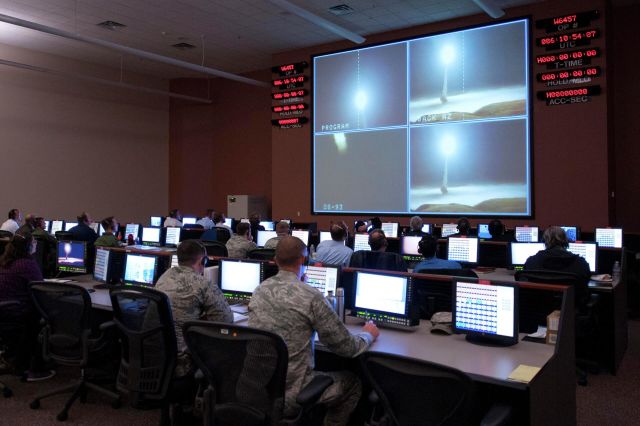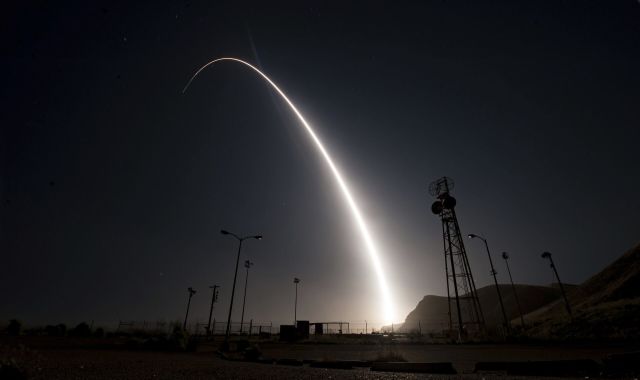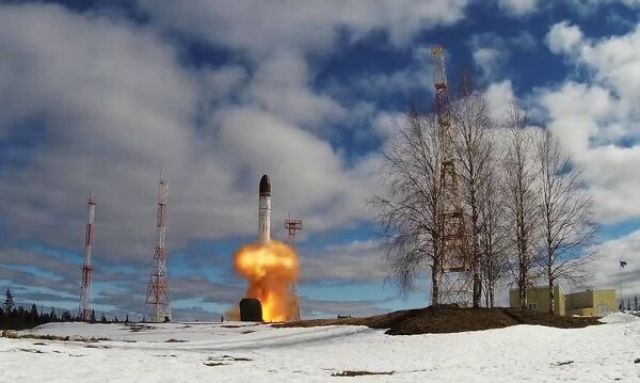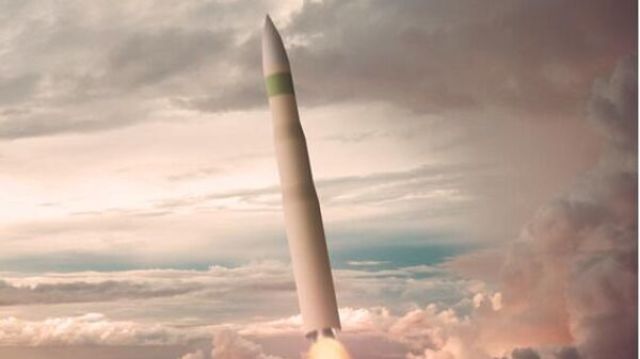The project of the new American ICBM faced delays
MOSCOW, Nov 21 — RIA Novosti, Andrey Kotz. The American program for updating the arsenal of mine intercontinental ballistic missiles seems to have stalled. US Secretary of the Air Force Frank Kendall said that the development of the promising LGM-35A Sentinel faced difficulties. And there is a risk of not meeting the agreed deadlines. About the problematic project — in the material of RIA Novosti.
Fail deadlines
Kendall did not go into details, but stressed that the Sentinel program, which includes civil engineering, the creation of communications and control infrastructure and, finally, the production of the rocket itself, turned out to be very difficult. The costs, he added, could go beyond the $85 billion allocated.

Minuteman III rocket test launch at Vandenberg Air Force Base, California
Image Source: © Photo : U.S. Air Force/Michael Peterson
"Some things will cost more than expected," the minister admitted. "Sentinel is probably the most important thing the Air Force has ever taken on."
In June, the Accounting Chamber published a report on the problems due to which ICBMs will enter the army not in 2029, but in the spring of 2030. In particular, they pointed out the constant shortage of personnel, logistical difficulties, and imperfection of software. However, the authorities are rushing designers to maintain nuclear parity with Russia and China, which are actively updating nuclear triads.
Instead of "Minutemen"
The competition for mine-based ICBMs was announced back in 2016. Two industrial giants competed — Boeing and Northrop Grumman. In 2017, they were allocated funds from the budget for a preliminary project - $ 349 and $ 329 million, respectively.
In 2019, Northrop Grumman made a cunning move: they acquired Orbital OTK, which supplied Boeing with solid-fuel rocket engines. The aerospace corporation lost its chances of success and withdrew from the competition.
The project was assigned the designation GBSD (Ground based strategic deterrent — "Ground-based strategic deterrence weapon"). The service life of a promising rocket is estimated at 50 years — that is, until 2080. There is not much information in the public domain about this weapon. It is known that the dimensions are about the same as those of the Minuteman III, so you will not have to significantly refine the mine launchers.
Accordingly, the locations will not change either. Minuteman III deployed to three Air Force bases: Warren (Wyoming), Malmstrom (Montana), Minot (North Dakota). On each — 150 missiles. The first ICBMs of the GBSD project will be put on combat duty in 2029, and they will completely replace their predecessors by 2038.
The rocket is three-stage, solid-fuel, with a range of at least 15 thousand kilometers. The new mixed fuel will provide high range. Naturally, they use the most modern element base. Accuracy will increase significantly due to correction by GPS signal.
The head unit is equipped with separable individual guidance combat units. They will install thermonuclear W87 in the mod 1 variant — how much is still unknown. The power of each is estimated at 475 kilotons. Three-hundred—kiloton modifications of the W87 were equipped with LGM-118A Peacekeeper - heavy mine ICBMs adopted in 1986. By 2005, they were disposed of under the terms of the START-2 agreement.
Russia's Response
Currently, the only mine ICBMs in American nuclear arsenals are LGM-30G Minuteman III. Although they have been upgraded more than once, these are weapons of yesterday (developed in the 1970s). Further maintenance and modernization were deemed economically impractical.

Tests of the Minuteman III intercontinental ballistic missile. April 2017
Image Source: © AP Photo / U.S. Air Force/ Senior Airman Ian Dudley
The remaining 450 "Minutemen" have a monoblock warhead with a capacity of 300 kilotons. The range is about 13 thousand kilometers. The missile defense system has not undergone significant changes since the 1970s and is actually limited to a set of dipole reflectors and several false targets.
The replacement of mine-based missiles in the Pentagon was not given due attention for a long time, because in the hypothetical Third World War, the United States relied on submarine-launched ballistic missiles (SLBMs) and strategic aviation cruise munitions. Thus, the warheads deployed on the Trident II SLBM — the standard armament of Ohio nuclear-powered ships, account for more than half of the total arsenal of nuclear deterrence forces.
Mobile ground-based missile system (PGRK) "Yars"
Image source: © RIA Novosti / Alexander Kryazhev
And in Russia, land—based ICBMs have always been the main component of the nuclear triad - the most powerful and numerous. Over the past decades, the Strategic Missile Forces have received several new missiles, including the Topol-M mobile and mine—based monoblock missile systems, as well as their further development - the RS-24 Yars ICBM, adopted in 2009. The latter are capable of carrying four combat units with a capacity of 300 to 500 kilotons, a range of 12 thousand kilometers. And they have modern means of overcoming missile defense systems.
However, the real breakthrough of the Russian defense industry is the RS—28 Sarmat complex, which will replace the Soviet P-36M2 Voevoda. Each will be able to deliver more than ten combat units to the territory of a likely enemy. The range, according to various estimates, is from 16 to 18 thousand kilometers. The principle of "orbital bombardment" is laid down in promising ICBMs, that is, Sarmat is ready to attack targets, including along a suborbital trajectory through the South Pole — bypassing missile defense systems.

Launch of a stationary intercontinental ballistic missile "Sarmat" from the Plesetsk cosmodrome
Image source: © Press Service of the Ministry of Defense of the Russian Federation
The newest heavy strategic complex "Sarmat" has been on combat duty since September 1. As in the field of hypersonic weapons, the US was catching up.
Andrey Kotz

